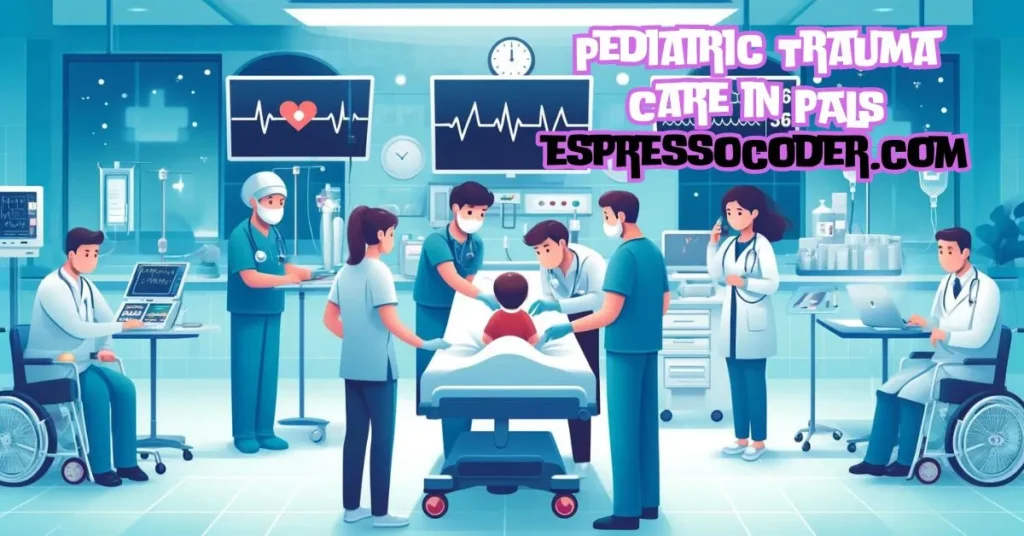Pediatric Trauma Care in PALS is an advanced training program. It is designed for healthcare providers who specialize in pediatric emergency medicine. It focuses on the rapid assessment and management of traumatic injuries in children. It lays down the detailed protocols and guidelines for giving life-saving interventions during high stress.
It covers the identification of critical injuries along with the initiation of correct treatments. PALS equips participants with the specialized skills and knowledge required to effectively address pediatric trauma cases. Therefore, PALS training improves outcomes and saves lives in emergencies involving children. Let us explore more about the life-saving protocols involved in PALS trauma care.
Contents
1. How Does PALS Approach Pediatric Trauma Care Differ from Adult Trauma Care?
In pediatric trauma care, the approach differs a lot from adult trauma care. It is due to unique physiological and anatomical factors. Here’s a breakdown of these differences:
- Physiology and Anatomy:
Children have distinct physiological responses to trauma. These include higher metabolic rates and smaller blood volumes. So, this in turn requires specialized assessment and treatment approaches.
- Injury Patterns:
Pediatric trauma includes different injury patterns compared to adults. This involves a higher prevalence of head injuries and non-accidental trauma.
- Psychological Considerations:
Children can also show responses of psychological trauma responses which are different from adults. It needs very sensitive communication and age-appropriate psychological support during the assessment and treatment.
- Equipment and Medications:
Pediatric trauma care requires specialized equipment and medications. These are calibrated for pediatric dosages and sizes. This ensures safe and effective resuscitation and stabilization.
- Communication and Consent:
Effective communication with pediatric patients and their caregivers is essential. This requires age-appropriate explanations and getting informed consent while keeping in mind legal and ethical implications.
- Team Dynamics:
Pediatric trauma care is inclusive of multidisciplinary teams. It includes pediatric specialists, trauma surgeons, nurses, and ancillary staff. They need clear communication, coordination, and role delineation to ensure the best patient outcomes.
2. What Are the Key Steps in Rapid Assessment and Stabilization of Pediatric Trauma Patients?
Timely and systematic evaluation is crucial for optimizing outcomes when it comes to rapid assessment and stabilization of pediatric trauma patients. Here are the key steps involved in this process:
- Initial Assessment:
You must quickly assess the pediatric trauma patient’s airway, breathing, and circulation (ABCs) to identify life-threatening injuries or conditions.
- Primary Survey:
Perform a focused primary survey following the ABCDE approach (Airway, Breathing, Circulation, Disability, Exposure). This is important to identify and address immediate threats to life.
- Secondary Survey:
Next, it’s important to conduct a comprehensive secondary survey. This includes a head-to-toe examination, to detect additional injuries so that the treatment can be prioritized on the basis of severity.
- Diagnostic Evaluation:
This includes appropriate diagnostic tests, such as imaging studies (X-rays, CT scans) and laboratory investigations. It’s necessary to further assess injuries and guide management decisions.
- Stabilization:
Here quick interventions are crucial to stabilize the pediatric trauma patient. This includes airway management, hemorrhage control, and administration of fluids and medications as and when needed.
- Continuous Monitoring:
Continuously monitor vital signs, neurological status, and response to treatment while reassessing for any changes in clinical status, ensuring ongoing stabilization and appropriate escalation of care when necessary.
3. How Does PALS Ensure Minimizing Further Harm During Pediatric Trauma Management?
In pediatric trauma management, minimizing further harm is the most important. Here’s how PALS ensures the minimization of further harm:
- Comprehensive Training:
Healthcare providers receive comprehensive training in pediatric trauma management. It emphasizes the importance of minimizing harm during assessment and intervention.
- Recognition of Vulnerabilities:
PALS emphasizes the recognition of unique vulnerabilities in pediatric patients. It recognizes anatomical and physiological differences and tailors interventions while minimizing injuries.
- Prioritization of Safety Measures:
PALS focuses on the prioritization of safety measures during pediatric trauma management. This involves careful attention to airway management, immobilization techniques, and medication dosing based on weight and age.
- Team Collaboration:
PALS encourages effective team collaboration among healthcare providers involved in pediatric trauma care. This leads to clear communication and coordination to minimize errors and ensure the safety of the patient.
- Adherence to Evidence-Based Guidelines:
PALS advocates for adherence to evidence-based guidelines and protocols in pediatric trauma management, promoting best practices to minimize further harm and optimize patient outcomes.
Conclusion
PALS training equips healthcare providers to manage pediatric trauma. It lays stress on patient safety and minimizes further harm. So the main focus is on comprehensive training, recognizing vulnerabilities, prioritizing safety, teamwork, and evidence-based practices. PALS training therefore equips professionals with the basic life-saving skills. With the help of education and abiding by the protocols, PALS-trained individuals contribute to better outcomes for pediatric trauma patients.











